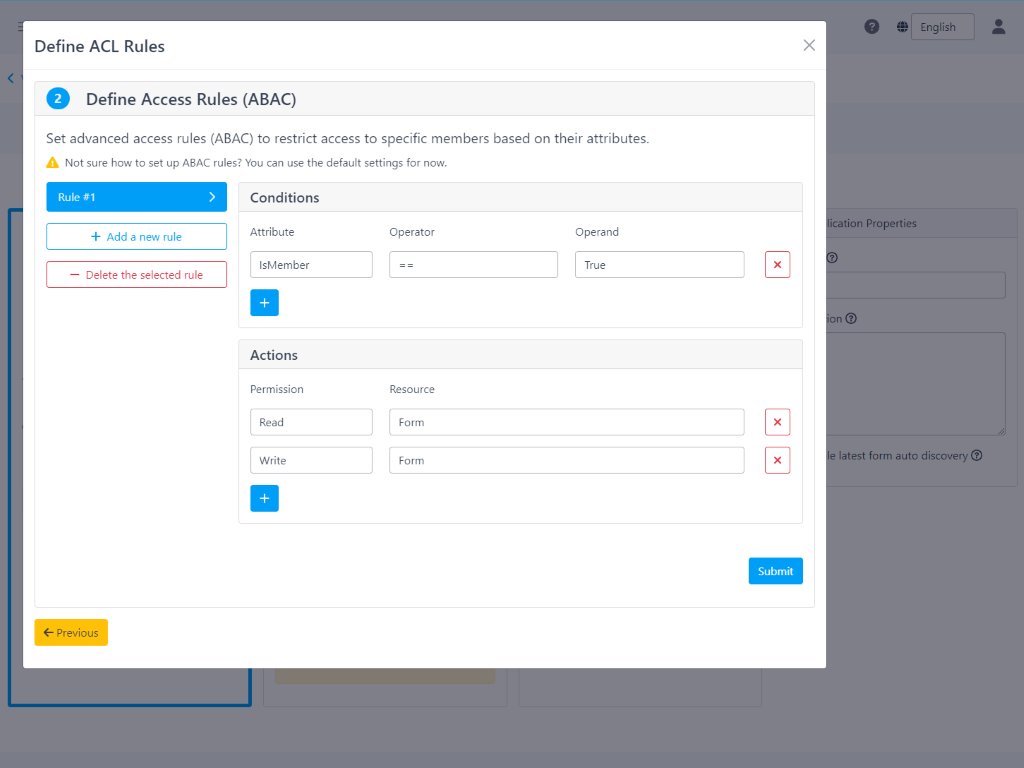Control Form Access: Easily Publish Forms for Multiple Audiences
With FormLang, you can seamlessly publish a single form to different audiences, catering to their specific needs and access control requirements. FormLang offers three distinct audience types, each with its own unique access control methods.
-
Everyone:
This option provides broad accessibility to the form,
making it available to anyone who encounters it. No
respondent information is tracked, ensuring
privacy. However, you can still implement protective
measures like setting a maximum number of responses or
requiring a password for access.
- Maximum Responses: Once the specified response limit is reached, no further submissions will be accepted.
- Password Protection: Only individuals with the correct password can access the form.
-
Visitors:
This audience type utilizes a preliminary form to gather
respondent information before granting access to the main
form. This approach is particularly useful when you need
to collect specific respondent details and avoid
repetitive data entry. You can safeguard the form using
the following methods:
- Maximum Responses: Limit the total number of responses.
- Password Protection: Restrict access to those who possess the password.
- Disabling New Visitors: Prevent new visitors from accessing the form, restricting access to existing users.
- Verifying Respondent Information:Validate respondent identities by requesting their email addresses.
- Organization Members: This audience type restricts form access to authorized members within your organization. Access control is governed by granular attribute-based access control (ABAC), granting access exclusively to users who match the defined attributes. These attributes can encompass email addresses, roles, organizational units, and other relevant criteria.
By carefully considering the target audience for your form, you can select the most appropriate publication method, ensuring that your form reaches the intended recipients while maintaining data privacy and security.
Publishing wizard
To publish a form, navigate to the Publish a Form option
within the design App. Upon clicking the Start
button on the cover page, the publishing wizard will appear,
as illustrated in Figure 1.
Key Components of the Publishing Wizard
The publishing wizard comprises the following elements:
- 1. Toolbar
- The toolbar at the top provides buttons for initiating a new publication and saving the current one.
- 2. Publication title
- The publication title is displayed below the toolbar. Click the title to edit it.
- 3. Publication steps
-
Below the publication title, three steps guide you through the publishing process:
- Step 1: Select the form you want to publish.
- Step 2 (Optional): Choose a form action that you have defined for this form. This form action will be executed for each response.
- Step 3: Determine the target audience for this form.
ACL (Access Control List) Options
The ACL options define who can access the published form. Figure 2 depicts the three audience types available:
ACL Rules for Members
Figure 3 showcases the ACL rules for organization members. You can leave the pre-defined rules as they are or customize them to suit your specific requirements.
Additional Notes
- The publishing wizard streamlines the process of publishing forms, making it easy to control access and ensure that your forms reach the intended audience.
- The wizard's intuitive interface guides you through each step, providing clear instructions and options for customizing the publication settings.
- By utilizing the publishing wizard, you can effectively manage form visibility and maintain data security while reaching the desired recipients.


